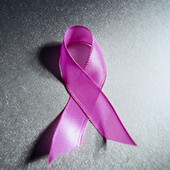4 TYPES OF BREAST CANCER
NK Life AHCC

Breast cancer is not equal for all women, even at the cellular level. As you say four large medical groups focused on the study of the disease.
The report was released by: American Cancer Society, US Centers for Disease Control and Prevention , US National Cancer Institute, and the North American Association of Central Cancer Registries. The qualification of breast cancer according to tumor subtypes could help to improve the treatment of the disease.
The report "Currency breast cancer, as four subtypes molecularly defined, not as a single disease," said the director of the National Cancer Institute Dr. Harold Varmus in a press release of the Institute. "This is a positive step, resulting from medically important information, and that guide therapeutic strategies already different"
The four major molecular subtypes are classified according to their hormone receptor (HR), a chemical receptor present on cells of breast cancer that responds to hormones such as estrogen. The categorization also depends on the HER2 gene. Both factors: hormone receptor (HR) and the expression of the HER2 gene, can influence acts as a tumor.
The four types of cancer are: Luminal A (HR + / HER2), Luminal B (HR + / HER2 +), HER2-enriched (HR / HER2 +) and triple negative (HR / HER2).
Experts have long known that the four subtypes respond differently to treatment and have different survival rates, according to the report published March 30 in the Journal of the National Cancer Institute.
The Registers of Cancer of the United States is record the different subtypes of breast cancer, and these new data will help researchers. They should also help patients better understand the impact of each subtype health.
The rates of breast cancer, deaths and the types of cancer vary in different racial and ethnic groups. For example, rates of breast cancer HR + / HER2 - subtype less aggressive - are higher among white women. Black women have higher rates of subtype of breast cancer more aggressive - the triple negative - compared to other racial / ethnic groups, higher rates of advanced disease and even deaths from breast cancer, according to the report.
"The division of breast cancer in subgroups highlights the fact that not all breast cancers are the same," said Dr. Stephanie Bernik, chief of surgical oncology at Lenox Hill Hospital in New York City. "These tumors are already treated differently by medical oncologists, but the new classification will help patients to better understanding and lead to higher survival rates."
Dr. Charles Shapiro is director of the Translational Breast Cancer Research at the Tisch Cancer Institute at Mount Sinai in New York City. He agreed that "the biology of these subtypes is of paramount importance for the selection of the most effective treatments for breast cancer. What is less clear is the apparent influence of race and ethnicity in these subtypes. This is of great importance to understand why these differences exist, and biology that underlies them. "
Source: Health
Special tumors
NK Life AHCC
